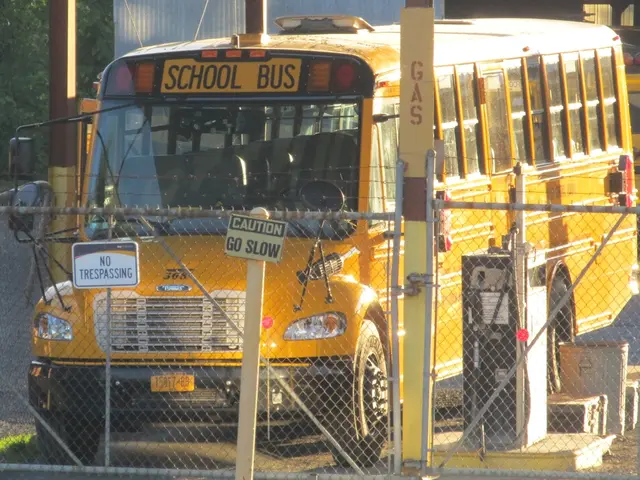Uncovering the Creature Behind the Mysterious Hole-Digging in Your Garden
Unearth the mystery behind unsightly holes, mounds, or tunnels in your lawn or garden beds without breaking a sweat! But figuring out who the culprit is isn't always straightforward. "There's some detective work involved," says Robert Pierce, PhD, associate professor and state extension fisheries and wildlife specialist at the University of Missouri. "You'll need to gather clues to figure out what might be wreaking havoc on your yard."
Before taking time and resources to tackle an issue, it's vital to correctly diagnose the perpetrator, as management approaches vary for different creatures. "It's really a process of elimination," says Mike Mengak, PhD, professor emeritus and wildlife specialist at the University of Georgia. "You could have about 20 potential suspects, but only a couple of them are the most likely offenders."
While a game cam might cross your mind, you may not get photos of the scoundrel, especially if it's a small animal like a chipmunk or vole. And there's always the possibility of a mistaken identity – "It might just be your neighbor's dog," warns Mengak. "Sometimes the obvious gets overlooked."
Here's what info to collect when pondering over those lawn-wrecking critters, as suggested by Pierce and Mengak:
Meet the Investigators
- Robert Pierce, PhD, is an associate professor and state extension fisheries and wildlife specialist at the University of Missouri.
- Mike Mengak, PhD, is professor emeritus and wildlife specialist at the University of Georgia.
Clue #1: Local Wildlife
Start by familiarizing yourself with the animals native to your region. Your nearby university cooperative extension service (find yours here) is an excellent starting point to learn about the wildlife challenges in your area.
Clue #2: Damage Location
Consider where the destruction is happening. Is it in a grassy meadow, adjacent to a tree line, or smack-dab in the middle of your planted flower beds? Knowing the types of habitats that suit certain animals can aid in the identification process.
Clue #3: Time of Year
Some damage is more common during specific seasons. For example, expecting mothers might be more inclined to carve out a cozy spot for their babies in the spring.
Clue #4: Active Hours
Animals have specific times of day when they're most active. If you find garden beds or lawns wrecked in the morning, it's less likely to be a turkey, as they sleep in trees to stay away from predators at night.
Clue #5: Hole or Damage Features
Pay close attention to the shape and size of the holes (is it flat or raised, is soil mounded up, and how big is it?). Such details can provide clues about the animal behind the vandalism.
Clue #6: Tracks and Droppings
Look for footprints or scat near the devastation, if you can manage. The Internet Center for Wildlife Damage Management offers useful information on identifying animal tracks and droppings, which may help in determining potential suspects.
Regular Suspects in the Southeast
While there's a host of critters that might be causing chaos in your yard, here are some of the most common Found in the Southeast, as per Pierce and Mengak:
Armadillos
Armadillos burrow in woodland areas but usually make dozens of shallow holes a few inches deep in your garden or lawn. You may spot the three-toed tracks with claw marks. Armadillos are primarily nocturnal but sometimes roam around during the day.
Groundhogs
Groundhogs prefer open fields, pastures, along forest edges, and under buildings or structures. Their main burrow entrance is approximately 10-12 inches in diameter, and the tunnel systems can stretch up to 30 feet. They're diurnal creatures.
Moles
Moles excavate tunnels in search of insects and leave distinctive raised ridges of soil above their tunnels, which are 5 or more inches beneath the ground surface. You'll see long, straight travel tunnels, as well as zig-zagging ones and occasional volcano-like mounds of soil. They're actively tunneling day and night.
Voles
Vole damage is similar to that of moles, but voles may occasionally be seen. They create surface or underground runways in heavy ground cover and can have colonies with runways about one to two inches wide, with four to five flat entrance holes concentrated in a small area. Voles feed and tunnel both day and night.
Raccoons
These clever creatures roam cities, suburbs, and even rural areas, looking for accessible food sources like gardens, pet food, or garbage cans. They may neatly lift and flip sod over with their front paws and occasionally use existing holes to create new dens. They're primarily nocturnal but also forage at dawn and dusk.
Rodents
Various rodents, such as squirrels, chipmunks, and even rats, might be the cause of your lawn troubles. For instance, squirrels bury and dig up nuts in yards, while chipmunks often dig holes near stumps, buildings, or brush piles. Rat tunnels, about three inches in diameter, are usually found in less obvious spots like near wood piles.
Skunks
Skunks dig for grubs and worms, leaving 1 to 3-inch cone-shaped holes across lawns. Despite being nocturnal, they may forage in daylight, especially if they're nursing mothers.
Wild Turkeys
Turkeys are less likely to cause noticeable damage, but in late summer, fall, and winter, they gather together in groups of up to 30 turkeys. Turkeys may scrape up new lawns or gardens, but research has found that much of the damage attributed to them is actually due to other wildlife such as raccoons, deer, or voles.
When to Call in the Experts
If you're dealing with a pesky wildlife issue that won't quit, damage you can't identify, or an animal denning near your home, enlist the help of a nuisance wildlife removal specialist. Contact your state's wildlife agency for assistance. Stay tuned for further insights in our upcoming post on identifying and managing wildlife in your yard!
- Robert Pierce, PhD, a University of Missouri associate professor and state extension fisheries and wildlife specialist, advocates careful detective work to identify the creatures causing problems in one's yard.
- Mike Mengak, PhD, a wildlife specialist at the University of Georgia, suggests considering a diverse array of potential suspects, including small animals like chipmunks or voles, before jumping to conclusions about the culprit.
- To effectively diagnose yard-harming creatures, one should begin by learning about the native wildlife in their region through their local university cooperative extension service.
- Knowing the types of habitats that suit certain animals can help in determining the cause of damage. For example, if destruction is happening in a grassy meadow, it might be a ground-dwelling creature.
- Damage in specific seasons can indicate the presence of certain animals, such as expecting mothers carving out cozy spots in the spring.
- The Internet Center for Wildlife Damage Management offers helpful resources for identifying animal tracks and droppings, which may aid in determining potential suspects.
- In the Southeast, common suspects include armadillos, groundhogs, moles, voles, raccoons, rodents, skunks, wild turkeys, and even human neighbors' pets. It's essential to be aware of their habits and signatures to correctly diagnose the issue and find suitable management approaches.







